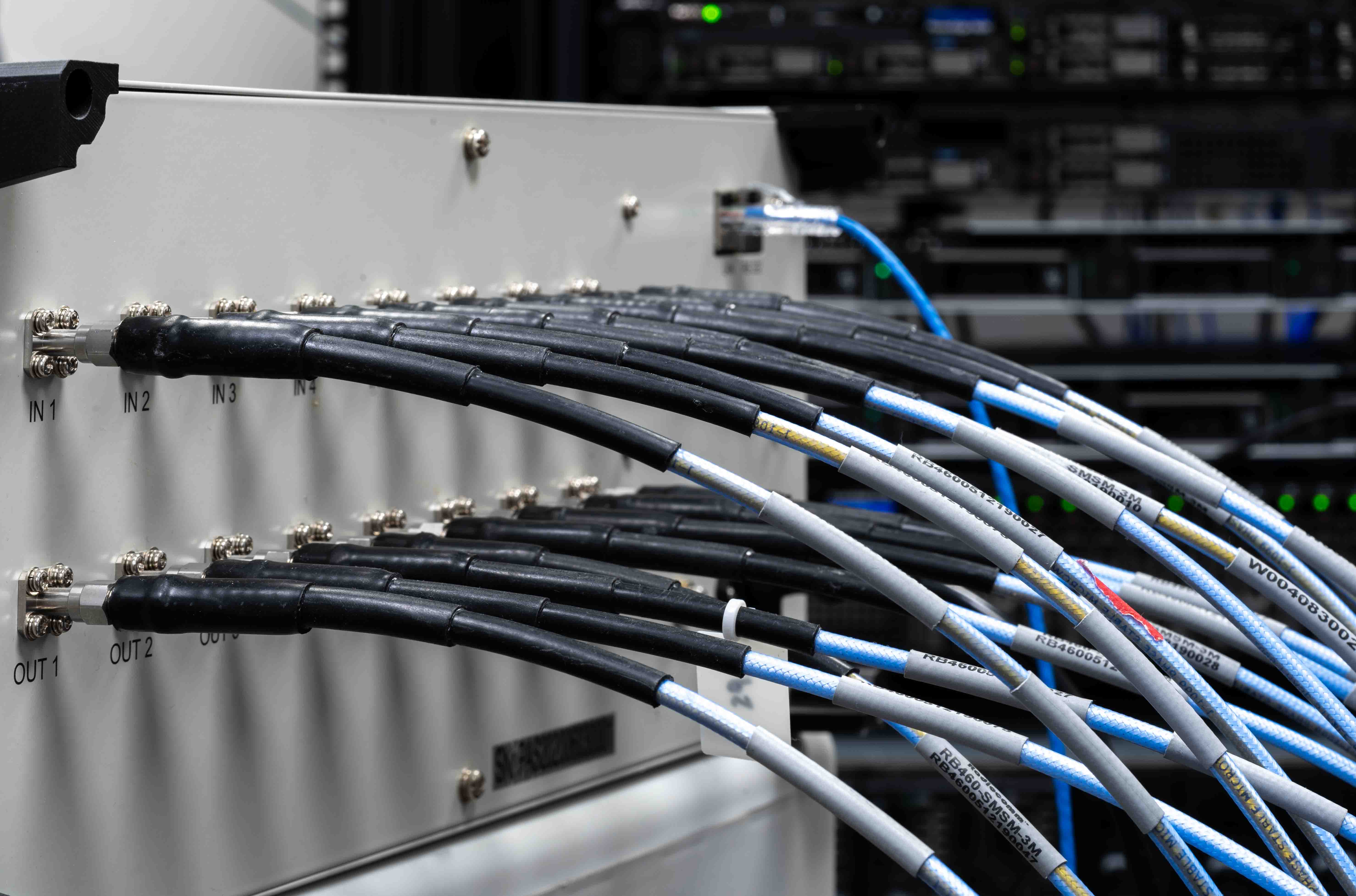How to Manage RF attenuation control to Help Scale Your Wireless Lab
Wireless labs can often have many Remote Radio Units or Remote Radio Heads (RRUs/RRHs) to manage. To conduct testing, these RF ports are connected to RF attenuation equipment before being routed to RF testing stations. When each RRU has multiple MIMO ports, this quickly adds up - it is not unusual for an RF lab to have hundreds or even thousands of RF ports. Even smaller labs with a few radios can have many dozens of ports. This presents several challenges:
- How many attenuators are required?
- Where should they be located?
- How should they be controlled?
One approach is to locate attenuation equipment at each testing station or RF shield box. While this approach scales easily as the lab grows, it quickly leads to an RF cabling nightmare. RF patch panels and splitters are used to route the signals from RRUs to each test station where they are required. Documenting, tracing and modifying these connections can be very time-consuming... time that could be better used to perform testing.
The case for an RF attenuation matrix, an alternative to using RF patch panels.
A more flexible approach is to connect each radio output to the input of an RF attenuation matrix. The attenuation matrix splits each input into multiple paths, one for each output port. The attenuation for each RF path is individually controlled. It then re-combines all RF paths together at each output, and the outputs are connected to the test stations. This allows all RF sources to be connected to all test stations / RF shield boxes, in any combination for maximum flexibility.

Using an RF attenuation matrix, there is no more need for RF patching. All RF connections are static, and signals are routed to the correct destination using software.
However, this creates two challenges.
- Insertion loss increases as the number of matrix ports increase. Depending on the frequency band, an 8x8 matrix will have at least 18-20 dB of fixed insertion loss. A 32x32 matrix will typically have over 40dB. After 32 or 64 ports, insertion loss becomes effectively too high for practical testing purposes – it will consume too much of the RF link budget.
- Larger switch matrix capacity starts to become expensive. An 8x8 matrix has 64 independent RF paths, but a 32x32 matrix has 1024 RF paths so internally it is 16 times more complex. With this complexity comes a corresponding increase in cost.
However, there are several strategies to reduce the number of ports needed.
Smaller is better
If more than 32 or 64 ports are needed, more smaller matrices can be used instead of one larger one. For example, four 8x8 matrices will have the same number of RF ports as one 32x32, but the insertion loss is lower (better for RF link budget) and the matrices themselves are much less costly.

This is a good strategy if not every RF source is needed at all test locations. It requires some planning and forethought but sub-dividing the lab this way can reduce the cost and complexity of the RF attenuation control design.
Virtual Attenuation Matrix
If you still need the flexibility of RF sources going to more test locations, Acentury LAMTA supports a solution called “virtual matrix”. A “virtual matrix” is two separate, physical attenuation matrices that operate in parallel, but LAMTA treats them as a single matrix.

For example, two 16x16 matrices can be logically linked together in LAMTA software into a single “virtual matrix”. If the inputs are combined, the result is a 16x32 matrix. If the outputs are combined, the result is a 32x16 matrix. This approach also reduces insertion loss and optimizes the cost of attenuation equipment.
Combine RF ports
There are other ways to reduce the number of RF ports required.
MIMO combining: if MIMO performance testing is not needed, then only one RF port per RRU is required. The ports can be combined, or unused ports can be disabled or terminated into an RF load. Attenuation is controlled at the RRU level.

Multi-RRU Combining: if a particular combination of RRUs will always be grouped together (i.e., in a specific cell/sector), then those ports can also be combined prior to the RF attenuation matrix. Attenuation is controlled at the sector level, but this preserves MIMO performance testing.

Full Sector Combining: this approach combines signals in two-steps. First, all MIMO ports on an RRU are combined. Then signals from all RRUs in each sector are combined and connected to a single matrix input port. Attenuation is controlled at the sector level, and MIMO performance testing is no longer possible, but this results in the fewest number of attenuation input ports.

Thinking ahead is important...
These approaches are shown as design concepts, and it is possible to use combinations of them together. Each comes with trade-offs and understanding them is the key to deciding what approach is appropriate for your situation.
To determine the attenuation network design and size you need, consider the type of testing that is required and compare it to the testing trade-offs described for each RF design option.
...and help is available.
Acentury has extensive experience designing RF attenuation networks for wireless labs. Our technical team is ready to help with any RF lab design or operational challenges. To reach them, contact sales@acentury.co.
To learn more about our LAMTA product, click here.
Related Articles
Application Note: Handover Testing Made Simple
How to Use Software Control to Automate RAN Testing for Advanced Mobility Scenarios and Log Analysis
Part 2: How CI/CD methodologies can be applied to 5G RAN Testing and Deployment
Have a question or comment?
We'd love to hear it. Fill out our General Inquiry Form or reach us directly at: info@acentury.co
CONTACT US